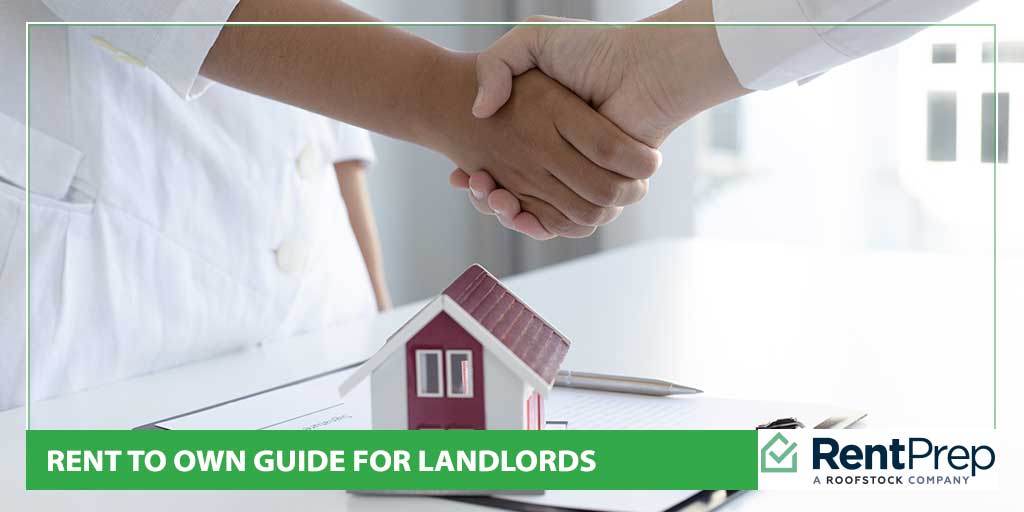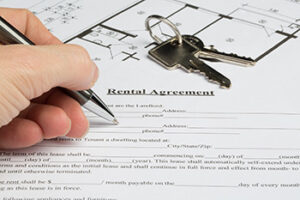

Have you ever had a tenant move out because they want to find somewhere they can buy or live for a long-term tenancy? Landlords in some areas will be asked if lease to own agreements are an option at their properties.
Even if you haven’t considered this setup before, rent-to-own homes can be a great option for landlords who are ready to change up their revenue streams. This lease agreement type can help you to sell off some properties while still making an income, and there are a number of other benefits as well.
The key, however, is to be sure that you know how to set up these agreements so they are safe, effective, and profitable.
Today’s rent-to-own guide for landlords will cover, from start to finish, what you should focus on while making this type of agreement.

A rent-to-own contract is a rental agreement that includes either a purchase guarantee or purchase option. The arrangement allows the tenant to rent the property while also paying down on the house deposit monthly.
Additionally, the rent-to-own contract gives tenants the exclusive first purchase option at a specified, future date.
Essentially, the agreement acts as a lease agreement as well as a purchase agreement. The contract sets up the basic terms of the agreement so both parties are aware of how the purchase could happen.
Through a rent-to-own contract, renters who aren’t quite ready to buy can begin the process of owning their first home while landlords can also secure a potential sale while still renting the property.
What are the basics of a rent-to-own agreement? These agreements are typically made up of two primary parts:
These parts can be combined into one agreement or signed as separate agreements, but they must both be signed by all involved parties in order to make a rent-to-own contract. We’ll cover what should be included in more detail in the next section.
The rental agreement is going to be very similar to a standard rental agreement, and it should cover everything you would typically include in these contracts. This contract is focused on the terms of the tenancy, the responsibilities of each party, the lease period, and what rent will be paid.
The option section of the agreement is the section that gives the tenant the right to buy the rental property at a specified time.
Typically, this is how a purchase option works:
Of course, the exact terms of the arrangement are going to vary on a case-by-case basis. The details should be clearly outlined in your rent to own agreement.
There are many reasons why landlords are often willing to set up a rent-to-own situation; these are the most common:
If you’re considering using rent to own for a property, consider if the risks are something that you can mitigate:
Now that you’re caught up on what a rent-to-own arrangement is and how it could affect your business, let’s break down how to put this setup into action for your properties.
First, you and your tenant will need to agree on the type of rent-to-own situation you will set-up. It’s best if you have a contract set up that you can propose to the tenant.
As mentioned above, there are two main types of agreements, and they are used in different situations.
Most landlords and tenants use the purchase option, but you may prefer the purchase agreement if you need the certainty of a buyer.
Next, you’ll need to determine the purchase price. The purchase price should always be set up front, but you could set multiple purchase options depending on when the purchase happens.
Once you’re familiar with the range of prices in the area, consider adding 5-10% to the price. Many landlords do this to help balance out rising home prices while also compensating you for the uncertainty.

An option fee is the upfront payment that a tenant makes to you in order to have a purchase option in place. Essentially, they are paying for the right to purchase the home at the end of their lease.
The option fee is negotiable, so you will want to work out what you believe is appropriate. This can range from 1% up to 7% of the purchase price. This one-time payment is nonrefundable, and it will be taken off the purchase price at the time of sale.
How long will the tenancy period be before the property sale occurs? Depending on when you would like to sell the property and when they will be financially able to make the purchase, this period typically lasts between one and three years.
When your tenant pays rent each month, that amount will now account for more than just rent. The amount they pay monthly will be both their monthly rent for their ongoing tenancy and their rent credit.
Rent credit is an extra amount of money paid monthly that is considered to be a down payment on the eventual property purchase. This amount is usually set at 25% or 30% of the monthly rent, but the amount should be determined with your tenant.
Some landlords put this money into an escrow account until the sale occurs; others simply apply the value to the sale down the line.
As with any rental agreement, you’ll want to make sure the lease agreement clearly defines all roles, responsibilities, and other factors. In addition to the standard guidelines, the lease agreement should detail the terms that have been decided between both parties for the rent to own agreement.
One way that rent-to-own lease agreements often differ from standard agreements is that tenants will often be made responsible for the upkeep of the property since they will be its owners down the line. This, however, is dependent on the specific lease and area.
As the tenant’s lease period comes to a close, check in with them about the purchase and what their plans are. If they still plan to make the purchase when the lease period ends, they will need to apply for a mortgage as you begin the sale process.
Is it still possible to evict a tenant if you have a rent-to-own agreement in place?
If the tenant breaks the terms of the lease in a serious or repeated way, it will be possible to evict them. Even though they are paying for the option to purchase the home, that does not give them the right to break the terms of the lease. Municipal court or a common pleas court will be able to judge the case.
If you encounter problems with the tenant, learn how to address those problems and move forward with eviction here.
Generally yes, but it shouldn’t be treated as a guarantee.
If you have a tenant who isn’t sure that rent to own is right for them or not, they might ask you some questions about the arrangement. Generally speaking, this arrangement is best for tenants who:
If your tenant fits these points, they may find the arrangement beneficial.
In addition to what is outlined above, you should also be sure that you research your local and state laws about what should be included in a rent-to-own contract. Some states require specific disclosure amendments and inspections before a lease-to-own contract is signed. If this applies, you will want to enact them.
Unless the tenant breaks the lease agreement, there aren’t many situations in which you could easily end the rent-to-own contract. The option to give the tenant back what they have put down to end the agreement exists, but that would have to be negotiated between you and the tenant.
You should only agree to a rent-to-own situation if you are ready to commit to it.
The most important thing to remember while setting up a rent-to-own contract is that your contract should be detailed not only about the purchase option but also about the lease agreement. The contract sets up the future of the property, so take time to review things carefully so nothing is forgotten.
Now that you know how to set up a rent-to-own deal, you can set up a possible sale while still generating income. Remember that sometimes it is better to sell a property and move on. To hear more about how rent to own properties can diversify your business, check out our podcast episode on the topic.
Our tenant screening services have been trusted by over 100,000 landlords & property managers since 2007. SEE OUR PACKAGES
Starting at just $21.00!